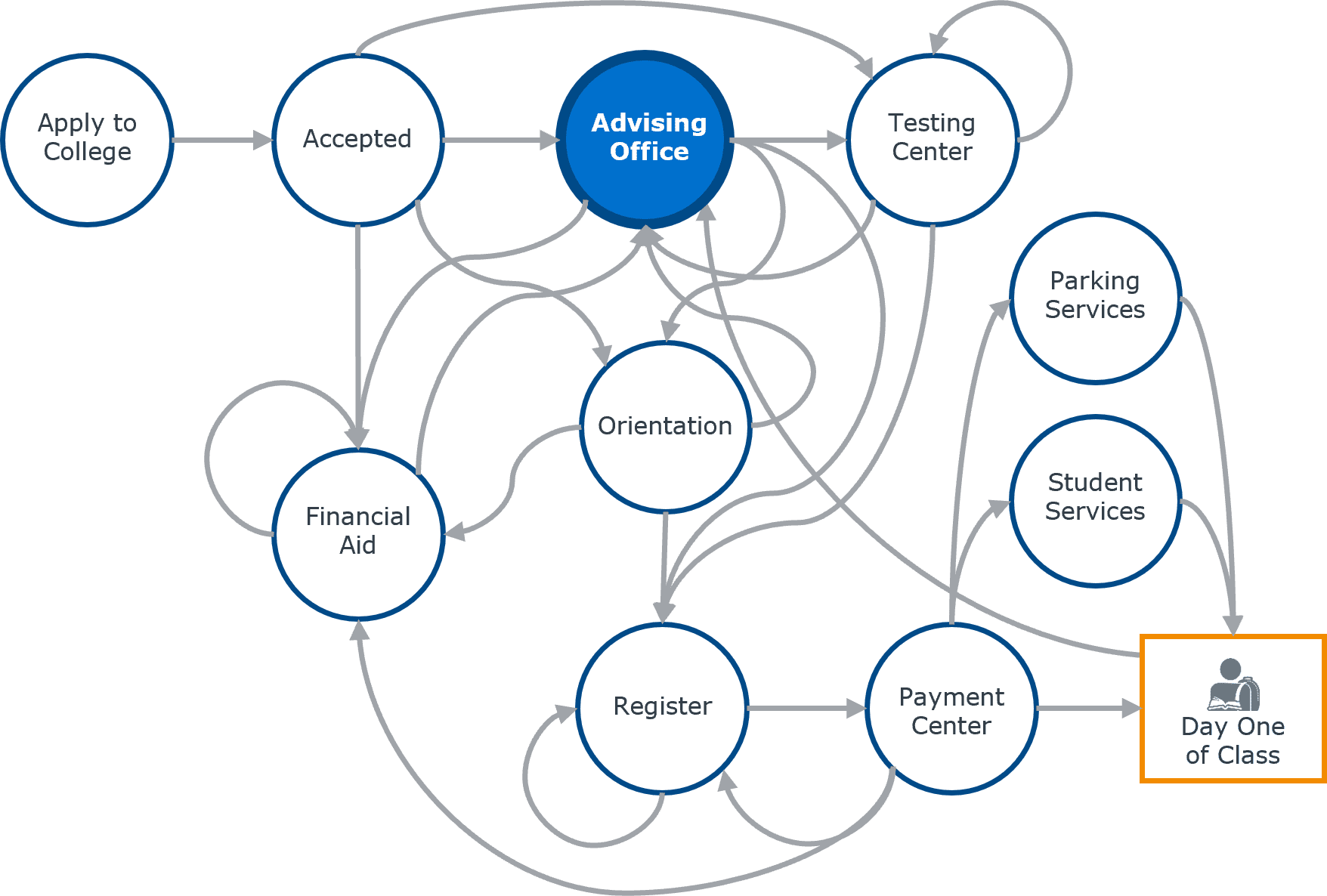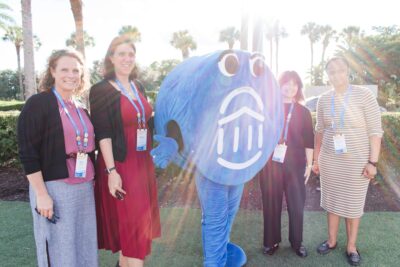How four-year institutions can use AI to tackle summer melt
Undergraduate enrollment is rebounding, but many admitted students still melt from summer onboarding before fall classes even begin. FAFSA delays, academic under-preparedness, and looming federal policy changes are making the path to enrollment more confusing than ever. While community colleges have traditionally experienced the highest rates of summer melt, four-year institutions are not immune—and students facing the greatest barriers to access are often the most susceptible.
Summer melt isn’t driven by a single issue; it’s the result of a long, often confusing list of tasks students must complete after being admitted. From housing forms and orientation steps to health requirements and financial aid, the onboarding process can quickly become overwhelming.
This is exactly the kind of challenge student-centric AI was built to address. As more students feel overwhelmed during the transition to their university, and staff capacity remains limited, AI can step in to fill critical support gaps. By providing timely, personalized guidance around key tasks and deadlines, it helps more students make it from admission to arrival.
Read below to learn how your institution can use student-centric AI to address summer melt.
3 ways AI can help four-year institutions fight summer melt
1. Help students register with confidence
Building a first-semester schedule can feel like an overwhelming, high-stakes puzzle. Many students don’t fully understand major requirements, general education paths, or prerequisite chains, and they’re often unsure where to turn for help. When that confusion builds, some delay registering or abandon the process altogether, which increases the risk of summer melt.
Navigate360’s Course Planning Agent helps take some of that pressure off. Available 24/7, it guides students—and often their families—through course options in real time, suggesting classes that align with their academic interests and goals. It’s not a replacement for advisors, but a way to extend their reach during the busiest times. With the tool handling routine questions and helping students take those first steps, advisors have more time to focus on complex cases and one-on-one support. Students get the clarity they need to move forward confidently, and staff can spend their time where it matters most.
2. Offer seamless, 24/7 onboarding support
Students today are used to instant answers, and they don’t lower those expectations when it comes to their colleges and universities. But at many institutions, onboarding and orientation tasks are scattered across campus. Even simple questions can push students off track when they’re bounced between offices and have to explain their situation over and over. That kind of friction, especially during the summer, can cause students to disengage and ultimately melt away before classes begin.
The onboarding journey often forces students into a maze of disconnected offices and tasks—creating confusion and delays during a critical window of engagement.

And when students can’t find clear answers, they turn to the one place they know: advising. That puts added strain on already-stretched teams and makes it harder for staff to focus on high-impact work.
According to EAB’s survey of four-year practitioners on student “customer service":
84%
of staff think students' customer service expectations have increased in recent years88%
of practitioners said customer service is very important to retention efforts38%
of staff think difficulty connecting to staff or tools contributes to students leaving the InstitutionGet the Latest Insights on Student Customer Service in Our Survey of Four-Year Institutions
That’s why always-on support isn’t just nice to have; it’s vital to meeting student expectations without overburdening staff. AI chatbots like Navigate360’s Student & Prospect Knowledge Agent give students consistent, on-demand answers to their most common questions about housing, immunization requirements, and orientation schedules. These questions tend to be simple and repetitive, with answers already covered in existing campus resources, making them a perfect fit for a chatbot to handle. Giving students the ability to find this information themselves—any time of day—helps them stay on track and addresses common drivers of summer melt, like confusion about next steps, missed deadlines, and difficulty accessing support. It also frees up staff to focus on high-touch tasks like clearing registration holds or finalizing schedules. It’s a simple way to build trust early and ensure students arrive feeling supported and confident.
3. Build belonging messaging at scale
A strong sense of belonging is one of the biggest factors in keeping students enrolled and that feeling starts long before classes begin. For many students at four-year colleges, move-in marks a major life transition and a moment of uncertainty about whether they’ll find their place on campus. The weeks leading up to arrival are a critical window to start building that sense of connection. That’s why personalized, proactive communication during the summer can make all the difference.
When students get messages that speak to their unique experience and show that someone’s paying attention, it helps build trust and reinforces their decision to enroll. But for most four-year institutions, doing that at scale is a real challenge. Staff are juggling communication with thousands of incoming students, each with different questions, backgrounds, and concerns. Creating tailored messages for everyone takes time and capacity that most teams don’t have.
AI-powered communication tools help staff quickly create messages that feel personal and supportive without requiring hours of manual work. Whether a student is first-gen, coming from out of state, or still figuring out their academic path, the tool makes it easy to tailor outreach to what they need to hear. Instead of sending the same reminder to everyone, institutions can send the right message at the right time, helping students feel seen, supported, and ready to take the next step. That kind of connection can be the difference between showing up in the fall or quietly opting out.
Quickly create asset-based email campaigns with Navigate360’s Content Creation Agent

Simplify the path from admission to arrival
Getting into college should feel exciting—but for a lot of students, especially those facing extra challenges, the time between acceptance and move-in is stressful and confusing. AI tools can help advisors handle routine questions so they have more time for high-impact, face-to-face conversations with students. By making immediate and personalized help available anytime, these tools make it easier for students to stay on track, feel more confident, and start their first semester strong.
Bring student-centric AI to your campus
To speak with an expert or request a demo, please submit this form.

More Blogs

Three lessons from 1,200 student success leaders on higher ed’s future

What are students asking university chatbots?

4 lessons about the “make-or-break year”
Great to see you today! What can I do for you?